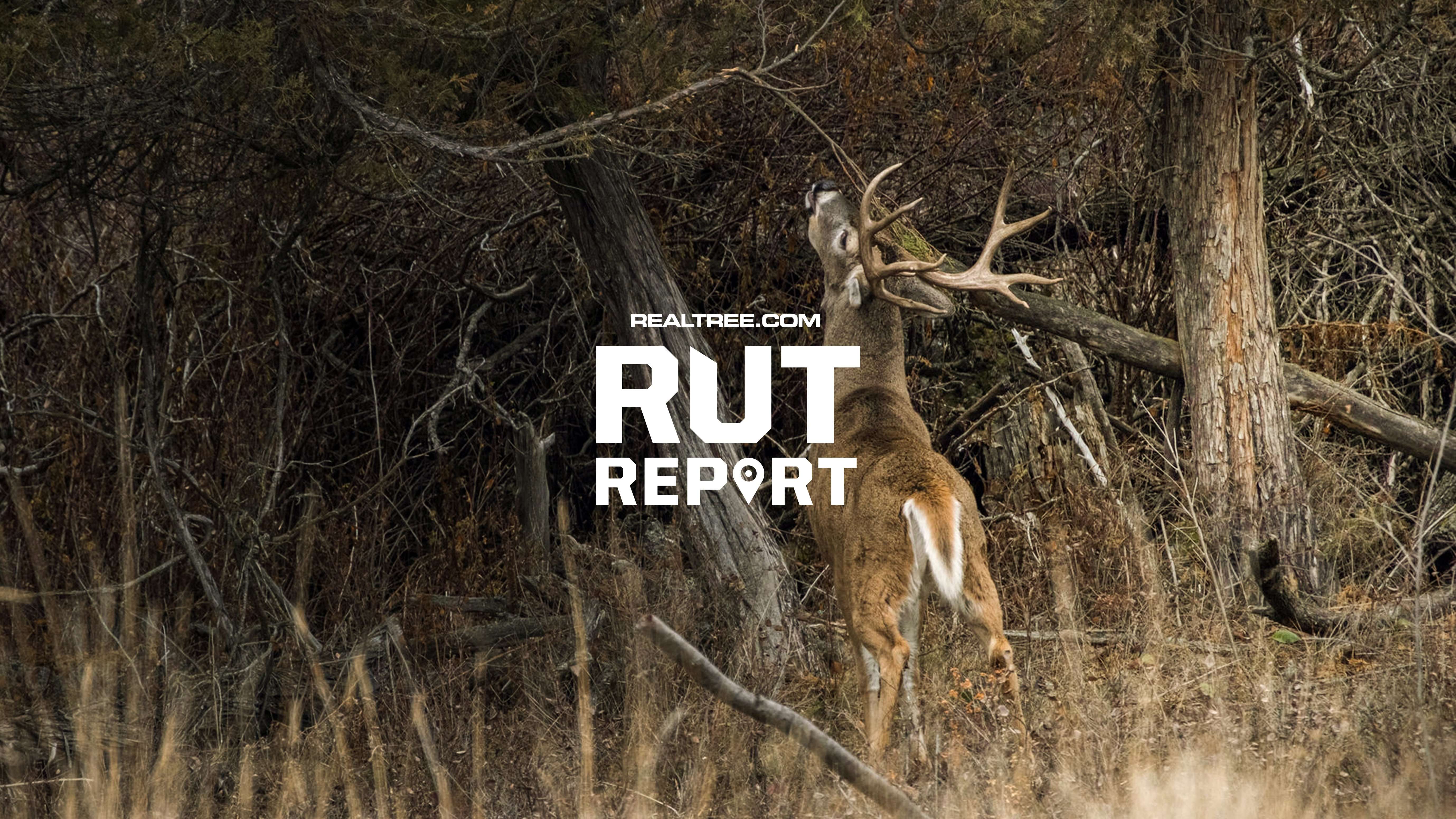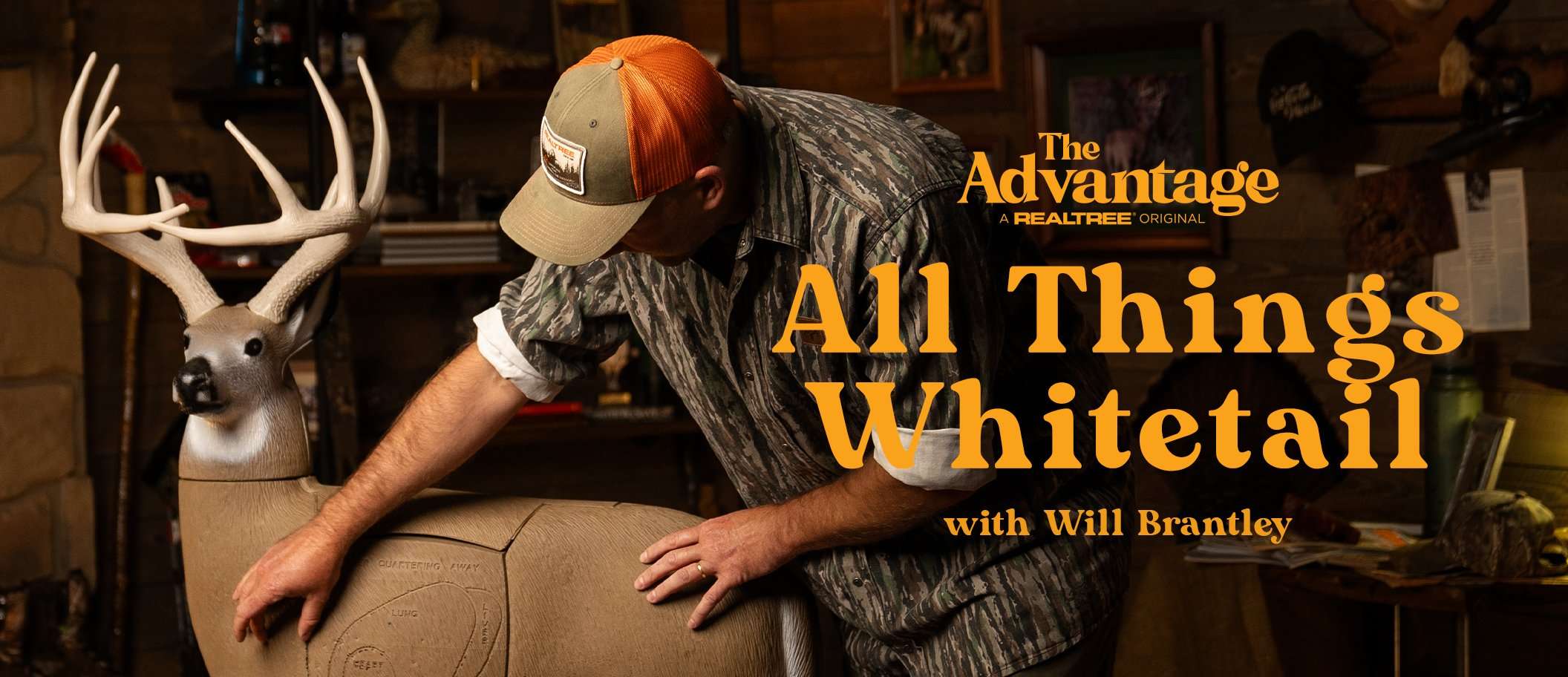Think a crappie won’t hit a bass-sized crankbait? Think again. Pulling plugs might be the most effective crappie fishing technique you’re not using
Crankbait fishing for crappies, is that a thing? To those in the know it is. While many crappie anglers rely on soft plastic lures or live minnows for the majority of their fishing, a contingent of tournament anglers and guides pushes the limits with crankbaits. Their catches might make a believer out of you.

Trolling crankbaits can be a great way to target crappies, especially during the post-spawn season. Image by Jason Sealock
I’ve relied on cranks from time to time to score on extra-large crappies, usually a result of incidental catches while bass fishing that signaled an opportunity to switch gears and fill the livewell. For the most part, these were seasonal catches revolving around casting to specific shorelines. Riprap channel banks held big schools of slabs that were suckers for a crankbait lightly ticking the rocks.
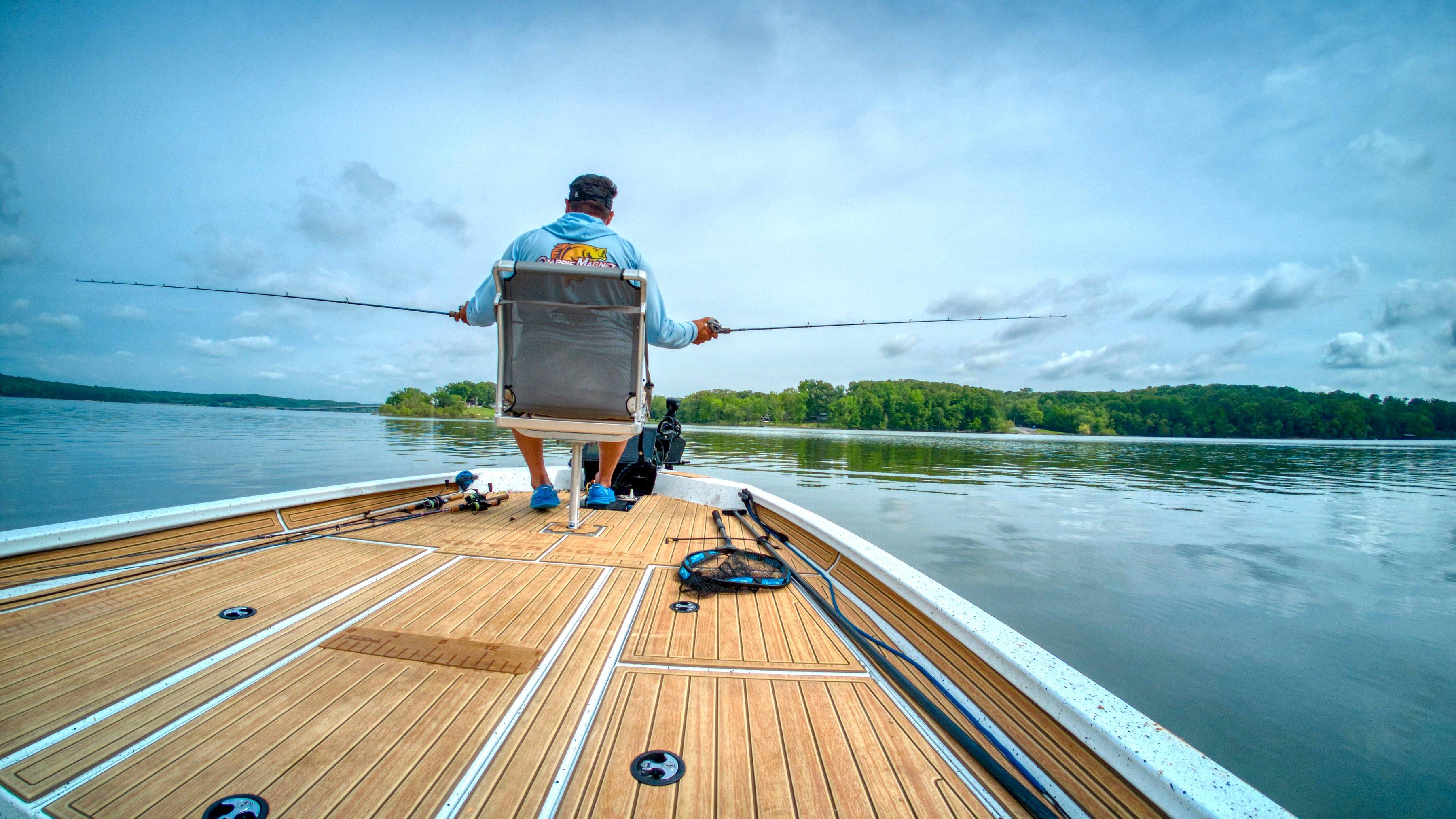
Crankbaiting crappie is usually a game of slow trolling over fish. Image by Jason Sealock
But for the most part, specifically targeting crappies with crankbaits is a trolling game. The lures allow an approach that really can’t be matched with any other lure category.
DON’T MISS: WHITE CRAPPIE VS. BLACK CRAPPIE: WHAT’S THE DIFFERENCE?
To learn more, we consulted with one of the best in the business, Doug Wynn of Crappie-Gills-N-More Guide Service in western Kentucky. Wynn guides on Kentucky and Barkley lakes, and he spends thousands of hours annually pursuing crappies, most often with a lipped plug. His insight into crankbait fishing is unbeatable.

Captain Doug Wynn regularly fishes cranks for big crappie on Kentucky and Barkley Lakes. Image by Doug Wynn
“People travel great distances to learn how to do this,” Wynn said. “I’m as much a teacher as a fisherman.” Wynn prides himself on instructing clients to the best way to target and catch crappies through an understanding of the waterbody. He reviews maps to finds drops and cover, targets individual fish on screen, and strategically positions his lures in the places crappies live.
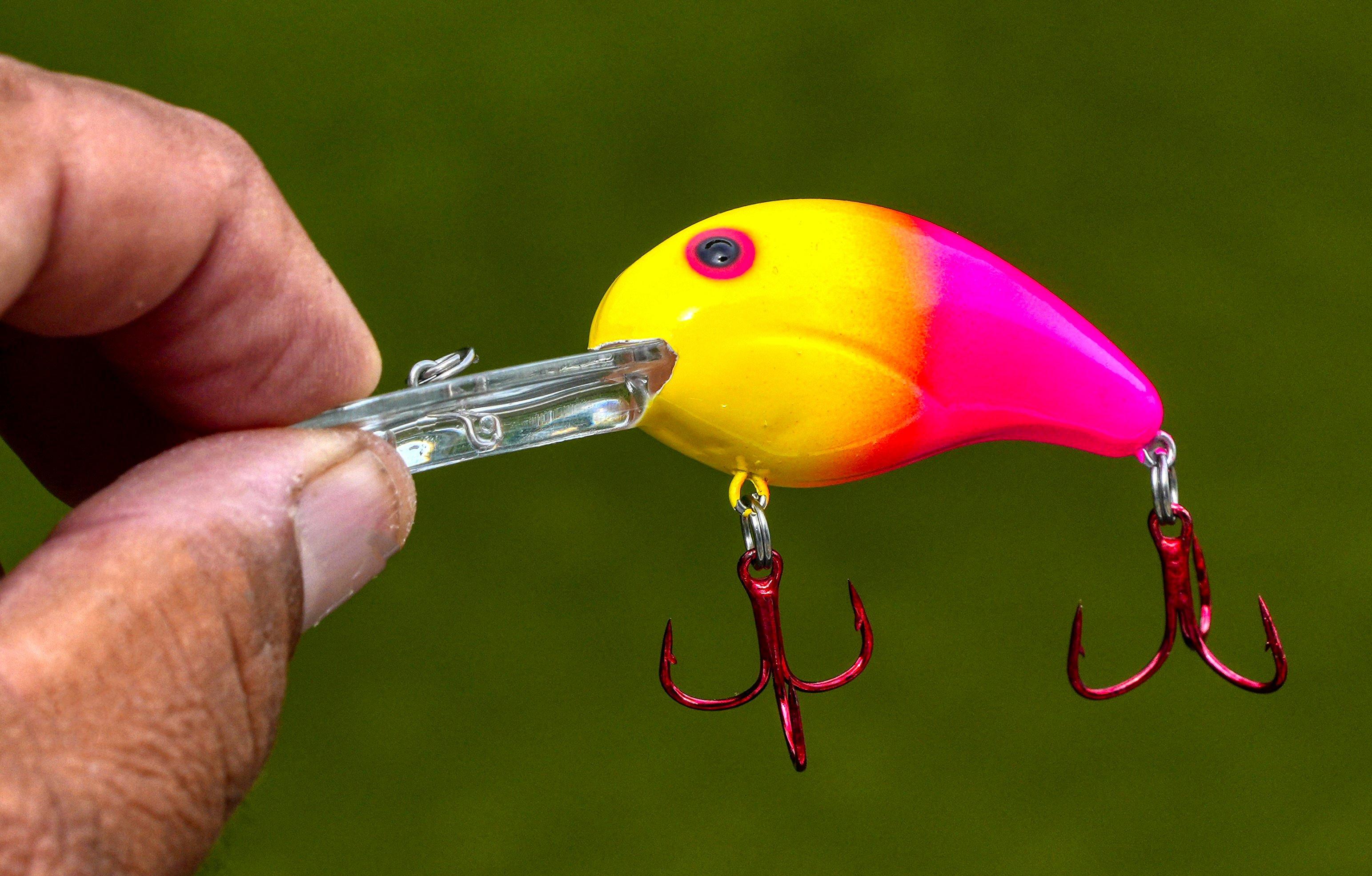
Wynn says that crappies can and will take a bigger bait than most anglers realize. Image by Jason Sealock
Those lures include a variety of crankbaits, from Pico Lures to Flicker Shads, Bandit bass baits, and even long divers intended for walleyes and stickbaits. Wynn frequently uses lures the average crappie angler would never consider, with some measuring 5 inches long. “Everything in the lake eats what we’re mimicking, which is a small minnow,” Wynn stressed. But not as small as you may think. Big crappies have big mouths for a reason, and they regularly consume large prey. “Most people have no idea crappies will hit lures this big,” Wynn said. In addition, big lures elicit reaction bites, something Wynn credits for much of his success. And nearly all of his lures feature red hooks; remember that one.
GETTING STARTED WITH CRANKBAITS
Wynn’s crankbait fishing system relies on an understanding of where to find fish through seasonal patterns. He begins using crankbaits once the spring water temperatures climb into the mid-50s. Shallow springtime crappies begin to group and move toward main lake structure, where they school and are susceptible to trolling. The usual places like ledges, channel banks, and points get the first search. Cover is necessary to turn a good spot into a great one.
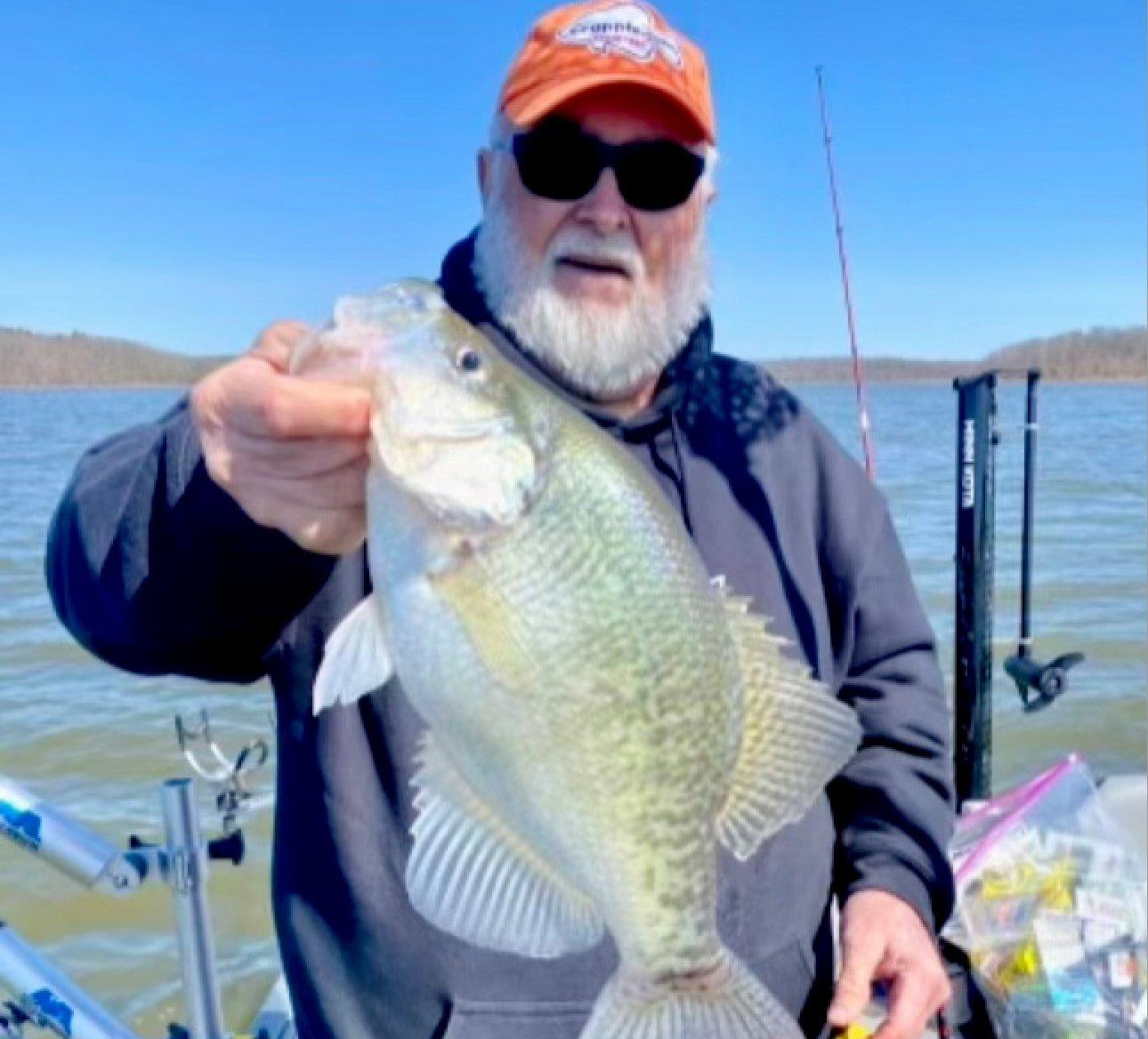
Wynn starts to target crappies with crankbaits once the water temperature hits the mid-50s in the spring. Image by Doug Wynn
“Most river ledges here are gradual, but lots have stumps or (manmade) brush,” Wynn said. Once he decides on a potential area, Wynn will be actively looking for fish on his electronics. He relies on traditional 2-D sonar, combined with Humminbird’s side and down imaging. Depth ranges vary from as shallow as 8 feet to as deep as 30. The depth at which the fish are holding is key, as lures must cross this plane and, if the fish are too high in the water column, they could spook from the boat.
DON’T MISS: HOW TO PICK THE BEST SOFT-PLASTIC LURES FOR CRAPPIE FISHING
Wynn’s trolling program is a precision one. He can pull a bait to within inches of a crappie’s nose, over and over again. This methodology begins with proper equipment.
Wynn trolls with as many as 10 lines deployed, doing so by strategically staggering rods of different lengths and power. Longer, more flexible ACC Crappie Sticks (up to 16 feet) go up front, while shorter rods are used in the rear of the boat. The system allows numerous lures to run tangle-free.
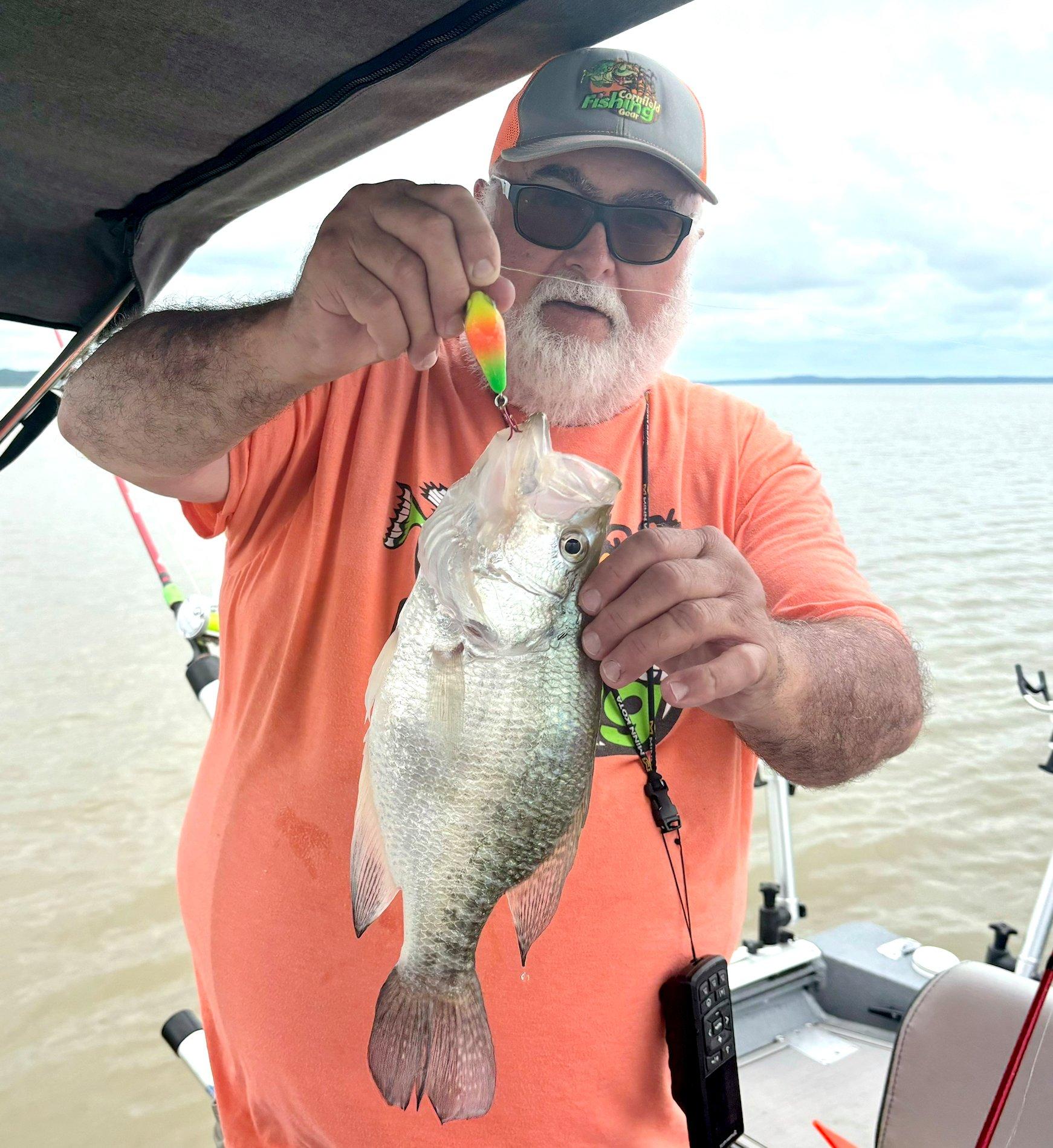
Wynn precision trolls as many as 10 lines at a time and tries to place the bait right in front of the fish. Image by Doug Wynn
Wynn often begins his day with a different lure on every rod, until a hot item makes itself known. Dark, solid colors get priority (one of Wynn’s best lures is a solid black Bandit), but baitfish shades are incorporated as well. Matching the hatch is key, sometimes.
Braided line is a natural choice for trolling and for Wynn, 15-pound K9 Braid is a go-to, although 12-pound fluorocarbon sees some use as well. All are spooled on Okuma Convector line-counter reels. Wynn trolls quickly, with his routine starting speed being 1.7 mph. If fish are routinely caught in a turn, he may slow down or speed up (inside rods signal for a slowdown, outside rods a bump up). Rods are placed in rod holders and stay there until a fish is hooked.
PRECISION TROLLING
Dialed in as his tackle is, one other piece of equipment may be even more important to Wynn: his phone. Wynn is a methodical user of the Precision Trolling App, which is the modern version of the printed resource once coined the “Trollers Bible” by hardcore walleye anglers. The Precision Trolling App allows anglers to know exactly how deep their lures run based upon line diameter and length.
Wynn uses the app to ensure his lures run to the exact depth he sees crappies on his sonar, or around and through the cover he’s scouring. And scour he does. “We’re going in there after them,” he says. As such, he loses a lot of lures. With as many as ten rods deployed at once, and a crew of paying customers, Wynn never stops forward-progress of the boat, even when a lure hangs a brush-pile or stake bed. Either it’s pulling free, or it’s breaking off, but Wynn said braided line allows for a high recovery rate—and precision trolling helps prevent hang-ups in the first place.
Wynn’s trolling approach includes lots of twists and turns, giving his baits more action and keeping them in the strike zone. When a crappie grabs a lure traveling nearly 2 miles-per-hour, it hooks itself. The fish will come up to the surface, and it should be reeled in quickly enough to keep its head up and prevent thrashing around and lost fish.
Sometimes people are critical that Wynn doesn’t play his fish. “I tell them they can play with them all they want in the boat,” he said. “This is meat hunting, plain and simple.”
While Wynn rarely uses forward-facing sonar when guiding, he does incorporate the technology in his desire to learn more about crappies. Through it all, he’s learned how often crappies are very high in the water column and susceptible to being spooked.
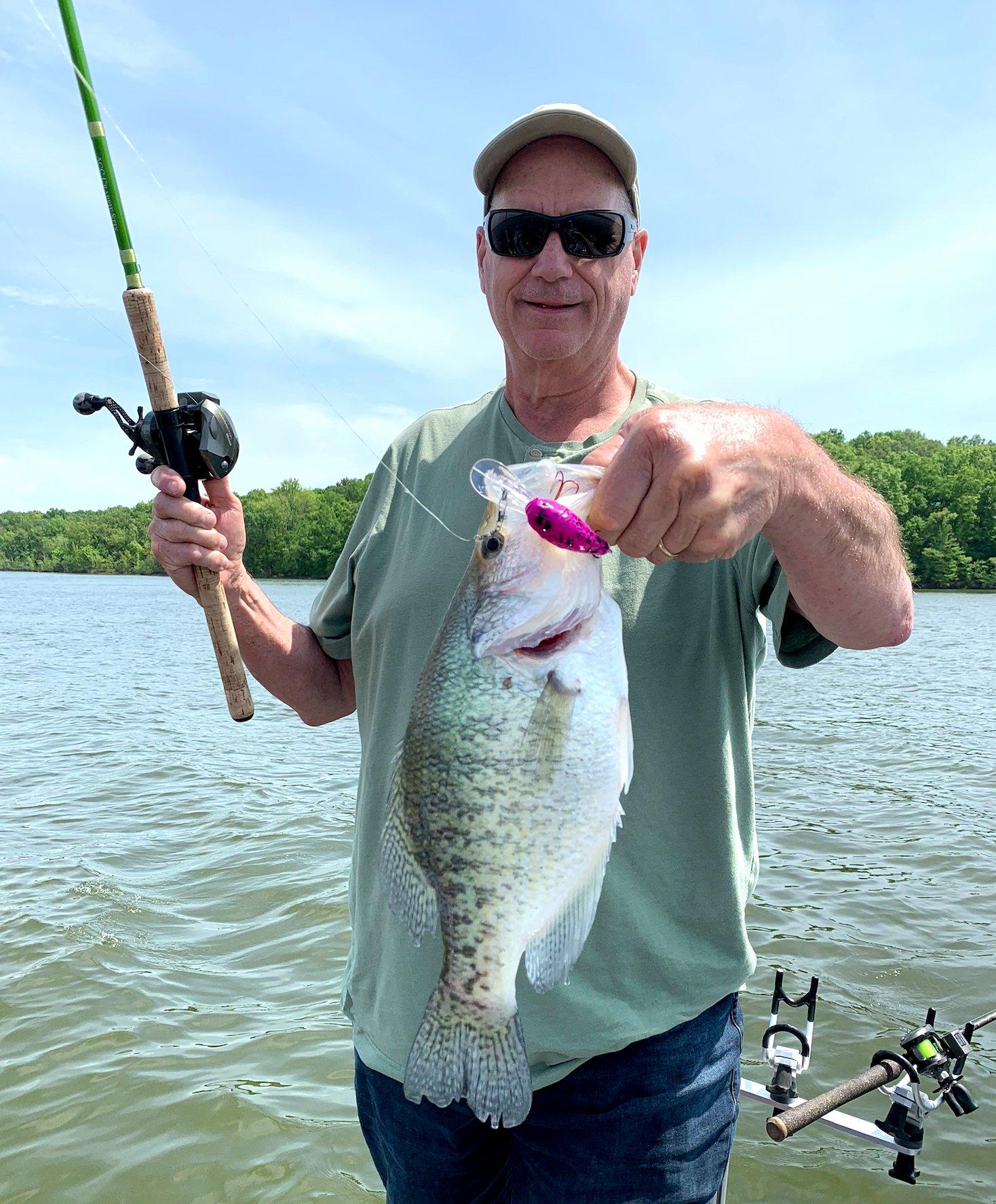
Wynn uses the Precision Trolling App and planer boards to move his baits away from the boat and know exactly how deep they are running. Image by Doug Wynn
“Today’s fishing boats sound like nuclear submarines going through the water, with all the transducers pinging and popping” Wynn stressed. Now more than ever, he’s using planer boards to move his lures out away from the boat. There, again, the Precision Trolling App keys him into the proper amount of line to send back.
Doug Wynn catches more crappies on crankbaits in one year the most of us will catch in our lives. He does so by utilizing a proven system, aided by technology and an open mind to experimentation. Through it all, he’s demonstrating to anglers of all skill levels that they, too, can spend a day on the water pulling crankbaits and come home with enough fish for a good fry and some for the freezer too.
DON’T MISS: HOW TO CRAPPIE FISH WITHOUT A DEPTH FINDER





